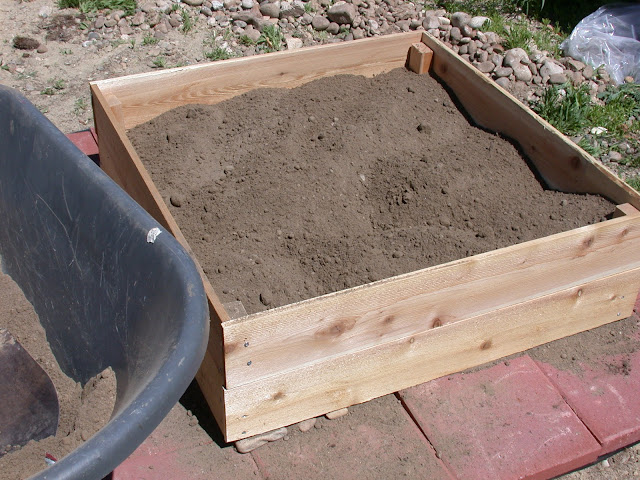The garden in June and July
I finished constructing the raised bed frames and filling them with soil. By mid June, I was picking broccoli, peas and radishes twice a week!

I planted the squash and cucumber seedlings that I started in May and hand watered them diligently. Then we had hot weather! Nine days of temperatures over 100 degrees.
 |
We had nine straight days of triple digits. Yikes!
|
Everything in the garden suffered in the heat. The cucumber and squash seedlings had looked good, and then began to wither away in the heat. It seemed like every time I looked at the plants they were wilting! I was hand watering everything in the garden twice and three times a day.
The squash plants were hanging on, but most of my little cucumber plants that I had raised from seed just withered away. I did not want to give up on cucumbers, but I knew it was too late to start more cucumber plants from seed. I decided to buy transplants from the local farm supply store and try again. And the heat of June segued right on into July!
That heat wave abated on the 4th of July. The evening of the 4th was quite pleasant. Weather on the 5th of July was total overcast with a few rain showers in the afternoon.
I decided to plant green beans. I had two variety of bean seeds leftover from 2012 as well as new seeds that I had purchased this spring. I did not know if the older seeds would germinate, but I decided to give them a try. I soaked all the bean seed varieties overnight in water. The next morning I dusted them with legume inoculant before I planted them in one of the new garden beds.
 |
| I had some seeds left over from 2012 and I had the new ones that I had purchased this Spring. |
I made a furrow approximately 6" wide and 1" deep. I sprinkled the inoculant-covered seeds in the furrow, allowing about 2" space between the seeds. I used a popsicle stick as a label, and wrote the variety on the stick and placed it at the end of the row. Then I covered the seeds with about 1" of soil, and watered them gently and thoroughly, with the hose nozzle on a fine mist.
 |
| Bean seeds in the furrow. |
 |
| Labeled row |
A rainstorm on July 8th convinced me that the garden would survive!






















































